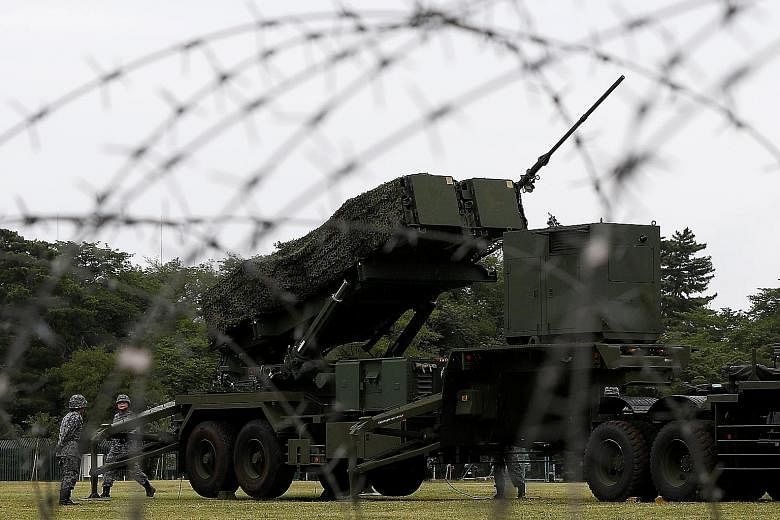TOKYO • Japan opened missile defence drills to the public yesterday, a move it says will reassure the country that it is ready to counter any missile attack by neighbouring North Korea.
A PAC-3 Patriot battery was driven to the Asaka Self Defence Forces base near Tokyo, where it deployed its radar antenna and raised its missile launcher to firing position. The drill is one of four being held across Japan.
"Making this public is a way to reassure people about their safety and bring peace of mind," Air Self Defence Force Major Akinori Hanada told reporters.
North Korea has pushed ahead with its missile and nuclear weapons programmes in defiance of United Nations Security Council resolutions, and regularly threatens to destroy the United States, Japan and South Korea.
US Defence Secretary Jim Mattis said this month that North Korea's advancing weapons programmes were the "most urgent" threat to national security and that its means to deliver them had increased in speed and scope.
South Korea has deployed the US Terminal High Altitude Area Defence (Thaad) anti-missile system to protect itself against the North Korean threat, angering China, the North's lone major ally.
Japan's PAC-3 batteries are the last line of defence against any incoming warheads. With a range of around 15km, they are able to protect only larger cities and key government installations.
Advances in North Korea's ballistic missile programme have raised concern in Tokyo that its PAC-3 batteries and Aegis destroyers in the Sea of Japan could be overwhelmed.
Japan has begun a US$1 billion (S$1.4 billion) programme to upgrade the PAC-3s to extend their range and accuracy, but the first of those will not be ready until 2020.
In addition to public PAC-3 exercises, some Japanese prefectures have conducted missile attack evacuation drills in recent weeks.
Japan will follow these up with a series of 30-second public information broadcasts and newspaper ads beginning tomorrow advising people what to do in the event of a North Korean missile attack, the Yomiuri newspaper said.
A Japanese government spokesman declined to comment when asked about the report.
Separately, South Korea yesterday demanded a UN probe into a suspected North Korean drone that crashed near the heavily fortified inter-Korean border earlier this month.
The South Korean military said the surveillance drone is a "grave provocation" which violates the Korean War truce.
The military also said it was beefing up South Korea's defence against potential spying activities - or even future attacks - by North Korean drones, adding more border surveillance radars and anti-aircraft guns to shoot down drones.
Photos retrieved from the latest drone include several overviews of the site for the Thaad system in the south-eastern county of Seongju, according to the military.
REUTERS, AGENCE FRANCE-PRESSE

